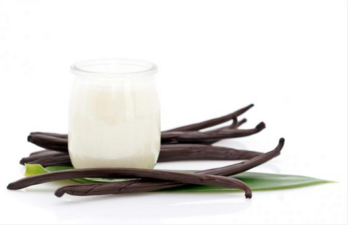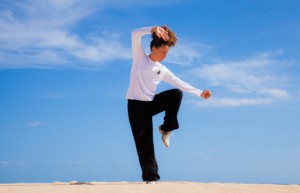


Koh Samui, Thailand: Think palm trees swaying under a gentle breeze, bodies luxuriating on open-air day beds being rubbed head to foot with sweet-smelling oils, and a myriad of exotic fruit and vegetable juice combinations freshly squeezed and constantly on offer.
This is Kamalaya Asia’s award-winning and renowned Wellness Sanctuary and Holistic Spa situated on Thailand’s ‘island of coconuts’ – Koh Samui, one hour’s flight from Bangkok.
From the moment you arrive here, it’s easy to see that this is no ordinary spa resort. Small, cosy, warm and friendly, it’s a resort where every staff member greets you with a smile and by name no matter whether youre lazing by the pool, ordering delicious fare at the restaurant or being pampered with one of a multitude of incredible treatments at the wellness pavilion. It’s just one of many personal touches here that really work as each guest is made to feel so special and so welcome.
It’s Kamalaya’s ultimate goal to make every visitor feel great by providing life-enriching, long lasting experiences. Your visit begins with a series of diagnostic procedures, including bio-resonance evaluations and nutritional and biological age assessments to check where you’re currently at, and consultations and comparisons also conclude your stay.
Set on a steep hillside, among lush tropical vegetation that leads down to a private beach, the resort is built around a sacred cave where Buddhist monks have worshipped for centuries.
Founder John Stewart actually spent a year living in such a cave during the 16 years he served as a monk in a remote Himalayan community. A Princeton graduate, John met his wife Karina, also a graduate of Princeton and a Doctor of Traditional Chinese Medicine and the two decided to combine their passions and vision.
The result was Kamalaya and the resort, which was born in 2006, has been swaddled in spirituality and serenity ever since a haven far away from the madness of the industrialised world just waiting to nurture and nourish every aspect of a visitor’s being.
My personal journey here certainly managed to tick every box. Having selected my preferred treatment package from a substantial wellness program menu some weeks prior to arrival, I was pleased to find the standard of practitioners even more sensational than Id been led to expect. Kamalaya offers solutions for detox, yoga, stress and burnout, fitness and weight control. I chose the Asian Bliss package from the Stress and Burnout range but had I simply been looking for a relaxing and restorative holiday, I neednt have committed to a program at all, and could have just soaked up the environment and complimentary inclusions like naturopathic consultations and holistic activities including yoga, meditation, tai-chi and pilates.
My chosen package cost me 61,000 baht (around 1,086 GBP’s) for 7 days but was the best decision I could have made. Disrobing constantly, drinking countless cups of delicious home-made mulberry tea before and after sessions, I was pampered and pummeled several times a day during 60 or 90 minute sessions which ranged from Vital Essential Oil, Thai and Marma Point (trigger point) massages to Reiki and ancient Ayervedic treatments like Shirodara ( a stream of warm, medicated oil is poured continuously on the forehead) and Chi Nei Tsang (Taoist abdominal massage).
One of my practitioners by the name of Saimy had the best hands I had ever encountered. Perhaps I shouldn’t have been surprised given his background as an Indian masseur of some 30 years standing whod learnt and perfected his craft from his grandfather who was the village healer, since the tender age of ten. As each treatment surpassed the one before, it didnt take long before I began to slip into what for me was an extremely foreign state of relaxation akin to being semi comatose.
Usually highly active to the point of hyperactivity, I was hardly able to recognize myself as I dragged my weary body up and down countless steps between the pool, the restaurant, the wellness centre and the yoga pavilion for the next few days. Lethargic and bloated despite an over-indulgence in the healthiest food I’d ever eaten, I sought advice from resident naturopath Samantha who told me my state was perfectly normal as the mind begins to unwind and relax and the body adjusts to the pace and to the intake of so much raw food.
Indeed, it’s the food that attracts so many people to Kamalaya. While over sixty per cent of guests come on their own in order to undergo detox therapy, Kamalaya’s unique philosophy is that one should detox with abundance and not starvation. As a result, Chef Kai Mueller continually creates the most amazing menus which include mouth-watering delicacies like lotus root and herbed mangosteen salad with wheatgrass spirulina dressing and Thai herb cured wild salmon sashimi on buckwheat with rocket goat cheese. Theres even a chocolate soufflé!
Guests have the choice of selecting meals from a specific detox menu which features low inflammatory, low allergenic and low GI vegetarian dishes, or from the broader menu, which changes with the seasons and features fresh, local and where possible organic produce.
Here, food is the medicine of choice, and much of whats on offer is healing in function and tantalising in form. By day four, my stomach had settled right down and I began to regain lost energy. The fresh juices, signature tonics and herbal teas had begun to work their magic and I realized that while each is bursting with nutrients, medicinal properties and taste-bud tempting goodness, its often the unique combinations here that keep visitors returning time and time again.
No matter what accommodation option you choose here, youre bound to find life soothing and serene. We stayed in a magnificent villa perched in the tree tops overlooking both the ocean and the two infinity pools that have been hewn out of rock with a freshwater spring running into them. I particularly loved our open-air bathroom that resembled a mud brick cocoon, and found it truly liberating to take a shower without the confines of walls or screens.
As accommodation options are additional to the price of wellness programs, there are several to be considered. But no matter if you select a room for around 7900 baht (141GBPs), a suite for 11,900 baht ( 212.50 GBP’s) or a rocktop, pool or beachside villa for 29,000baht (516.50 GBPs), youre bound to enjoy your experience. Kamalaya is an inclusive rather than an exclusive resort. It doesnt boast ultimate luxury or super slickness, but it’s warm, caring, supportive – and very comfortable indeed.
It’s a tranquil healing hideaway with no boundaries, no pressures and no prerequisites, where the natural environment and the inspiring palate of sights, sounds, aromas and textures, empowers and amplifies the healing experience. What you will find, as I most certainly did, is that as the days go by, your mind clears, your eyes shine, your skin glows, your vitality increases and your heart opens to the spirit of possibility.
By the time I arrived home and people asked why I looked so good there was only one word to give in answer – Kamalaya. And thats not a word or a place I will easily forget.
Contact information
Kamalaya Wellness Sanctuary and Holistic Spa:
102/9 Moo 3, Laem Set Rd, Na-Muang, Koh Samui, Suratthani 84140 Thailand Tel +66 (0)77 429 800
www.kamalaya.com
Review by Sandy Kaye, Australasia Correspondent










